Here’s a list of ornamental trees in a variety of sizes to create shade for any patio.
Our editors and experts handpick every product we feature. We may earn a commission from your purchases.Learn more.
Here’s a list of ornamental trees in a variety of sizes to create shade for any patio.
Our editors and experts handpick every product we feature. We may earn a commission from your purchases.Learn more.
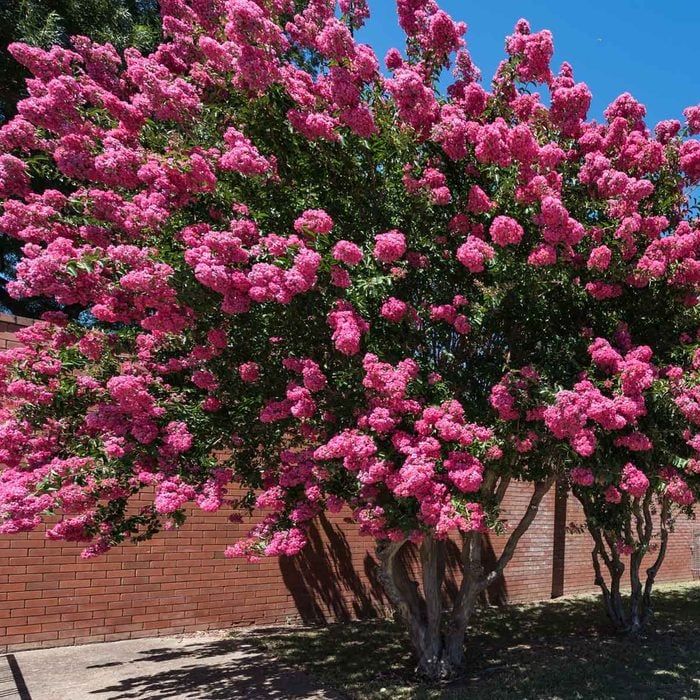
Pros:
Cons:
Crape myrtle trees are all over the Southern United States. These pretty, flowering trees are a landscaping stalwart. Large clusters of delicate, long-lasting blossoms fill yards with bursts of pink, red or purple all summer.
For purple flowers, the Purple Magic Crape Myrtle Tree is a good option. It reaches a mature height of ten feet, making it the perfect size patio tree for shade.
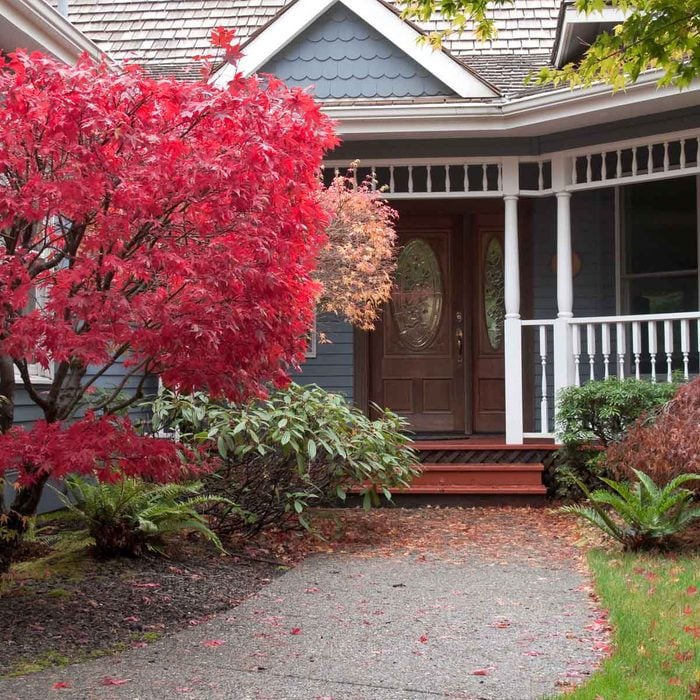
Pros:
Cons:
Japanese maple trees offer the same dazzling fall foliage and five-point leaves as other maple trees, but their size, shape and summer color set them apart from the rest.
Some of these fantastic patio trees, such as the Bloodgood Red Japanese Maple Tree, display deep red leaves from spring to fall, while others only turn red as winter approaches. They’re also popular for their slender leaves and smaller size. The Bloodgood reaches a mature height of 15 to 20 feet.
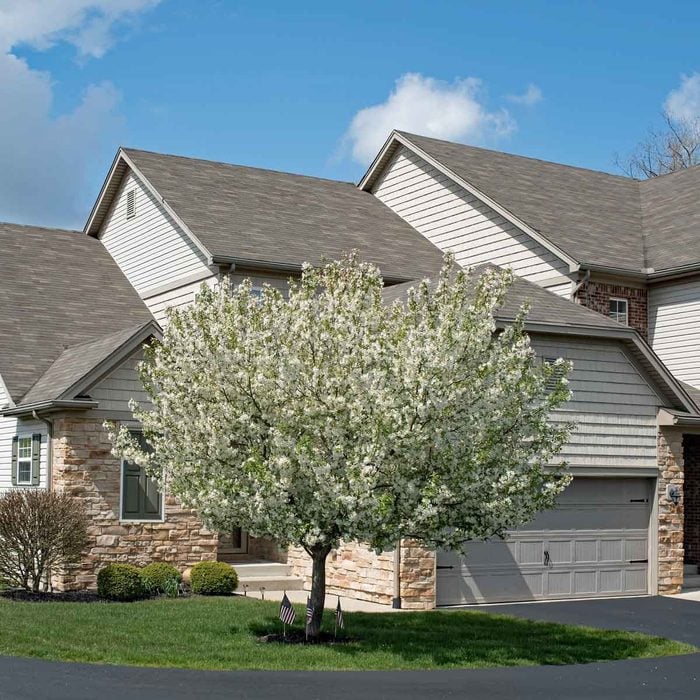
Pros:
Cons:
Crabapple trees are popular landscaping plants due to their hardiness. They can even grow in areas with temperatures below zero. Of course, the beautiful crabapple flowers are another perk of planting this tree near your patio.
Ornamental crabapple trees come in various colors, including white, pink and deep red, like this Prarifire Crabapple. It reaches a mature height of 20 to 25 feet.
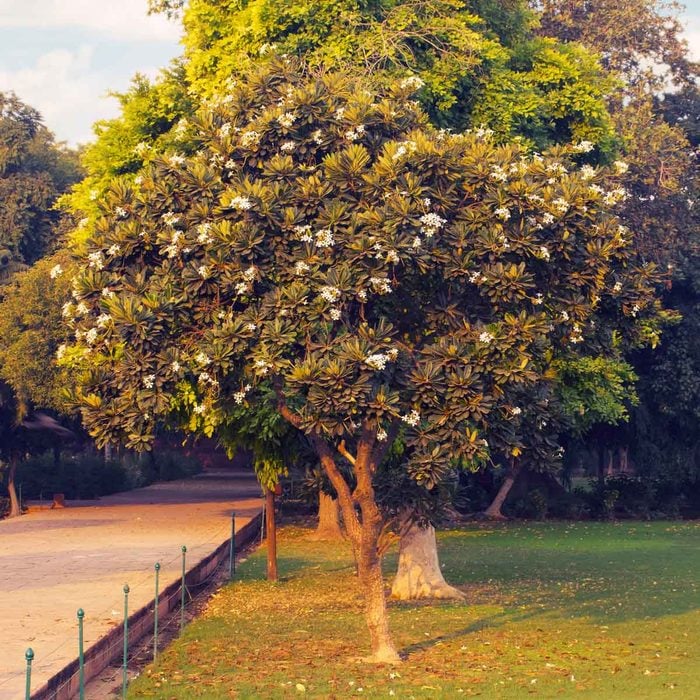
Pros:
Cons:
Southern magnolia’s enormous, fragrant flowers are dazzling on or off the tree. And the tree’s leaves are a glossy green.
The Little Gem Magnolia takes two or three years to flower. But once it does, the blooms last from May through October. It’s a slow-growing patio tree with a mature height of 20 to 25 feet, and it’s hardy to USDA Plant Hardiness Zone 7.
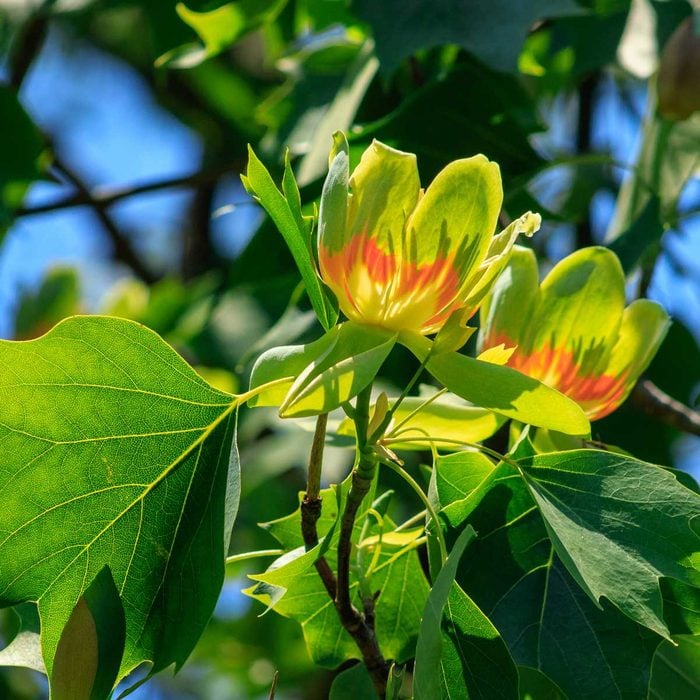
Pros:
Cons:
Here’s a less common but equally gorgeous patio tree: the tulip tree. The state tree of Indiana, Kentucky and Tennessee, these beauties are especially popular in the eastern United States. Mature trees feature tulip-like orange and green blossoms. These fast-growing patio trees can benefit from pruning.
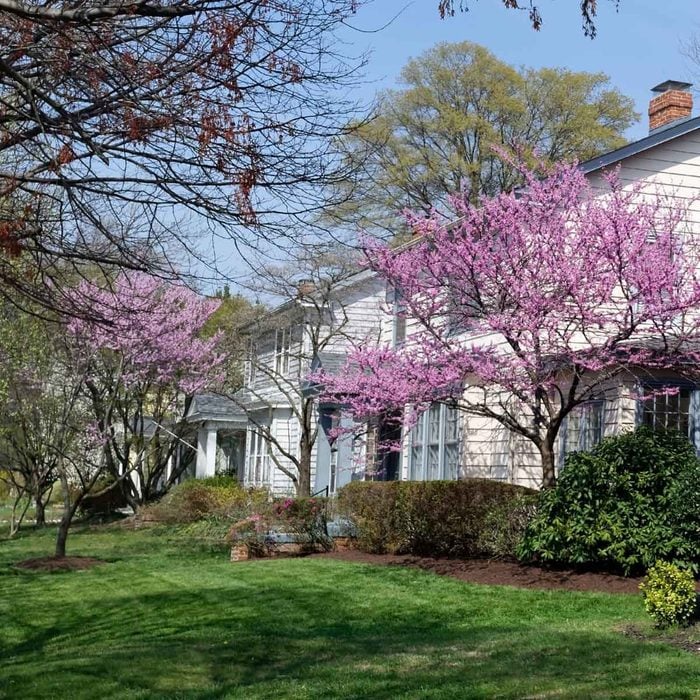
Pros:
Cons:
Redbud trees have a distinctive spring look. Tiny flowers cover their branches before any leaves sprout, giving the appearance of an all-pink tree. Redbud trees fill out with green leaves once their flowers are spent.
This Eastern Redbud Tree grows up to 30 feet tall and provides spring color and summer shade to patios in Zones 4 through 9.
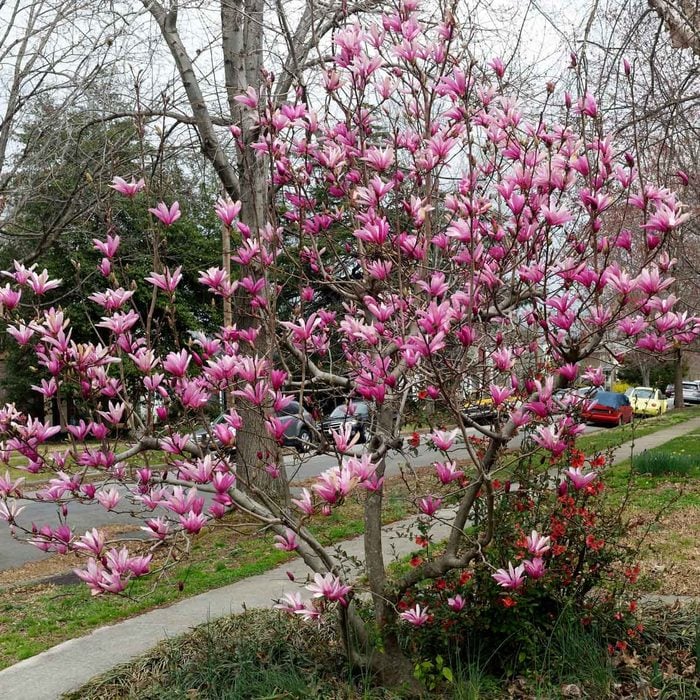
Pros:
Cons:
Japanese magnolia trees can handle lower temperatures than southern magnolias, which makes them a better patio tree for shade in Northern regions.
Unlike the southern magnolia, these hardy trees bloom only in the spring, and their flowers are much smaller. The Japanese Magnolia Alexandrina has eye-catching pink blooms that start dark at the base and lighten toward the edge.
The most important things to remember when selecting a patio tree for shade are the size and type of tree. Since you’ll be planting the tree next to your patio, you’ll have limited space. Consider the tree’s mature size to ensure it will work in your outdoor space. You want to ensure it has room to grow while having a broad canopy spread to provide shade.
The type of tree you get for your patio will depend on your climate and its location. Research which trees will thrive in your area and consider how much sun the patio currently gets (most likely a good amount since you’re looking to add shade).
Considering these two things will ensure that your tree can continue to grow and thrive for many years and add some beauty to your landscaping.
Mikaya Borchert, the author of this piece, is an assistant editor for Family Handyman. She specializes in indoor and outdoor gardening, organization and home décor. In addition to researching and writing about a wide range of gardening and home items, she also tends to her own balcony garden.
Dick Zondag is a master gardener, horticulturist and owner of Jung Seed Company, which is a member of the National Garden Bureau. His work can also be found on YouTube as The Garden Doctor.
Nina Derwin is a commerce updates editor for Reader’s Digest, Taste of Home and Family Handyman. She has experience researching and reviewing various items to help shoppers find the best products on the market. She researched and updated this piece.
Shade is key to making the most of your patio and turning it into a useful space you and your guests can enjoy. In choosing the best patio trees for shade, we combed through our ample gardening archives, pulling from years of research and experience on all things flora. We paid close attention to the type and size of the trees and considered how large they would be at full maturity because patios typically have limited space. We also factored in ease of care and how different types of trees thrive in various climates.
“The distance from the patio depends on the tree,” explains Zondag. “A normal shade tree should be no lower than 25 inches as if it is closer; it may affect the plantings that some people do around the patio.” Smaller trees can be planted closer, but remember that the canopy or foliage could encroach on your patio space. Roots can damage a patio, so give any newly planted trees enough room to grow.
Depending on the climate, you may be able to grow a tree in a pot instead of planting one. “If you are in a warm climate, planting a tree in a large pot can be done, but in a northern climate, planting a tree that cannot be moved in a protecting building will result in dead trees, as the roots of the trees are more susceptible to cold temperatures,” says Zondag. Dwarf or compact varieties of trees tend to do better in pots because they are smaller when fully mature. Read the care instructions and take note of the fully grown size before you plant in a pot.
Some trees can survive in pots through the winter, depending on the type and how cold temperatures get. If it gets too cold, some trees can die.